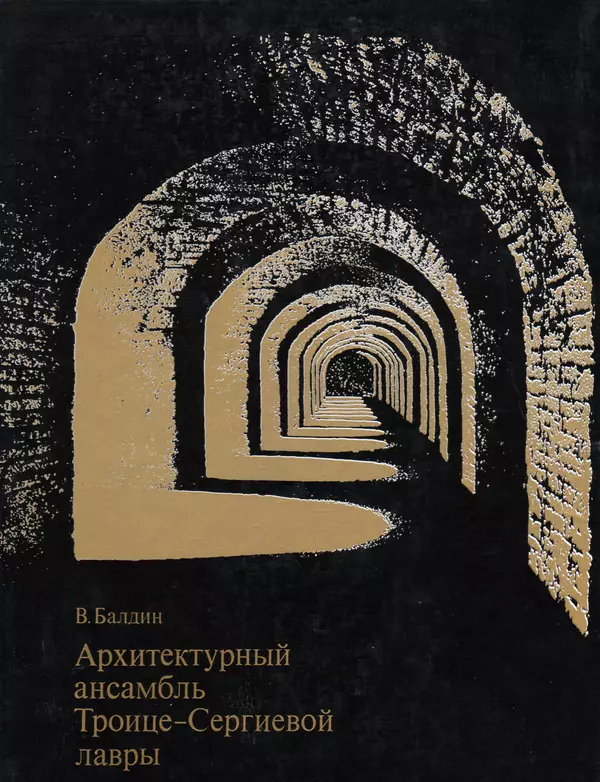The model of the Trinity-St. Sergius Monastery shows what the monastery was like in the middle of the 16th century. Then the construction of stone churches and buildings began here — and this turned a modest monastery into a powerful fortress. The exhibit was created on the basis of archaeological and historical research conducted by specialists in the 19th and 20th centuries.
Brick walls instead of wooden ones appeared in the monastery during the reign of Ivan the Terrible in 1540-1550. At that time, other fortress monasteries were being built in the far reaches of Moscow. And although the Trinity Church was only one of them, its construction, due to its particular significance (the relics of St. Sergius rested in the main church of the monastery) and its strategically important location, was accompanied by repeated royal inspections. The architects “duty-free and without money” could take the material for the construction of the wall, wherever it was. The fortress walls with twelve towers were erected in a short time. Later they were made higher and wider, the watchtowers were also made higher or rebuilt anew.
There were two ancient temples on the territory of the monastery. The Trinity Cathedral was built at the beginning of the 15th century. This is the only white stone structure in the monastery, all other buildings are made of brick. The Holy Spirit Church was built at the end of the 15th century. This is a rare type of temple: it combines a church and a belfry in a single building.
Under Ivan the Terrible, a new temple appeared in the center of the monastery — the majestic five-domed Assumption Cathedral. It took 26 years to build it — from 1559 to 1585. The fire that occurred during the construction, as well as the disfavor of Ivan the Terrible toward the monastery’s authorities of this period, hindered the construction. It was possible to complete the temple with the money that the sovereign gave “in eternal prayer” for his tragically deceased son Ivan. The Assumption Cathedral was consecrated after the death of the autocrat.
The reconstruction model also shows buildings that have not survived to this day, as they were in the middle of the 16th century. The buildings are known from written sources and archaeological research. Among them are the refectory and the kitchen of 1469, it is believed that they were built by the Moscow merchant Vasiliy Ermolin. Also on the model are monk’s cells, the wooden palace of Ivan the Terrible and the gate church of The Reverend St. Sergius of 1513 — the first stone gate with a temple above it, placed in the wooden monastery fence. Together with the palace of Ivan the Terrible, they repeated the layout that is believed to have existed in the monastery even under St. Sergius: cells standing “quadrilateral shape” around the temple.
Brick walls instead of wooden ones appeared in the monastery during the reign of Ivan the Terrible in 1540-1550. At that time, other fortress monasteries were being built in the far reaches of Moscow. And although the Trinity Church was only one of them, its construction, due to its particular significance (the relics of St. Sergius rested in the main church of the monastery) and its strategically important location, was accompanied by repeated royal inspections. The architects “duty-free and without money” could take the material for the construction of the wall, wherever it was. The fortress walls with twelve towers were erected in a short time. Later they were made higher and wider, the watchtowers were also made higher or rebuilt anew.
There were two ancient temples on the territory of the monastery. The Trinity Cathedral was built at the beginning of the 15th century. This is the only white stone structure in the monastery, all other buildings are made of brick. The Holy Spirit Church was built at the end of the 15th century. This is a rare type of temple: it combines a church and a belfry in a single building.
Under Ivan the Terrible, a new temple appeared in the center of the monastery — the majestic five-domed Assumption Cathedral. It took 26 years to build it — from 1559 to 1585. The fire that occurred during the construction, as well as the disfavor of Ivan the Terrible toward the monastery’s authorities of this period, hindered the construction. It was possible to complete the temple with the money that the sovereign gave “in eternal prayer” for his tragically deceased son Ivan. The Assumption Cathedral was consecrated after the death of the autocrat.
The reconstruction model also shows buildings that have not survived to this day, as they were in the middle of the 16th century. The buildings are known from written sources and archaeological research. Among them are the refectory and the kitchen of 1469, it is believed that they were built by the Moscow merchant Vasiliy Ermolin. Also on the model are monk’s cells, the wooden palace of Ivan the Terrible and the gate church of The Reverend St. Sergius of 1513 — the first stone gate with a temple above it, placed in the wooden monastery fence. Together with the palace of Ivan the Terrible, they repeated the layout that is believed to have existed in the monastery even under St. Sergius: cells standing “quadrilateral shape” around the temple.




